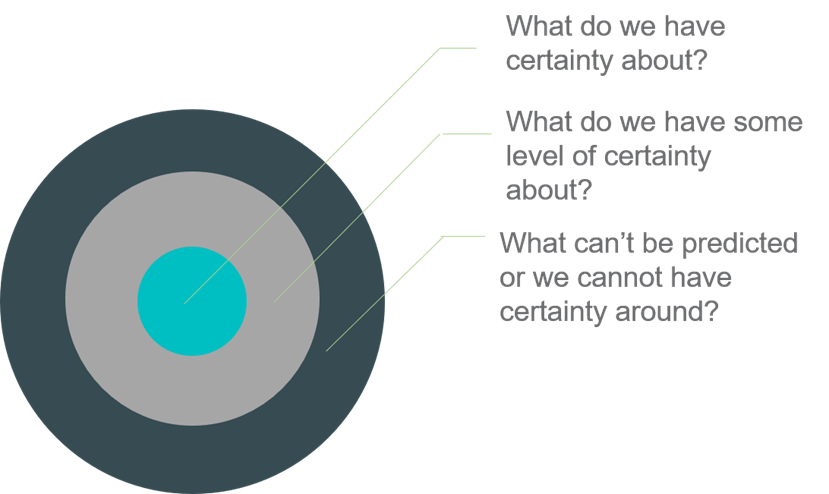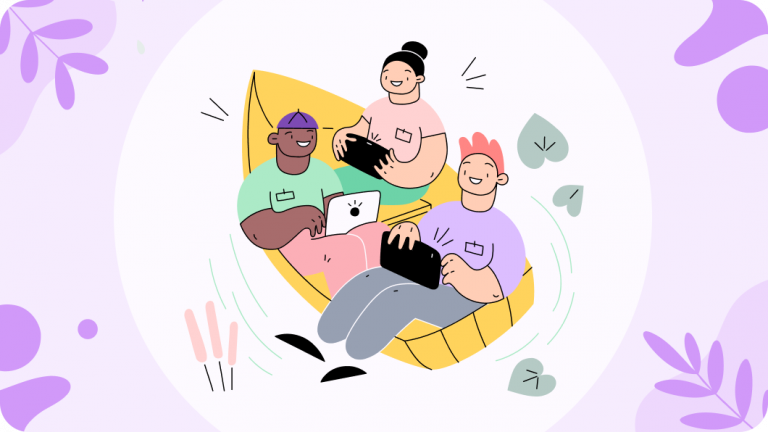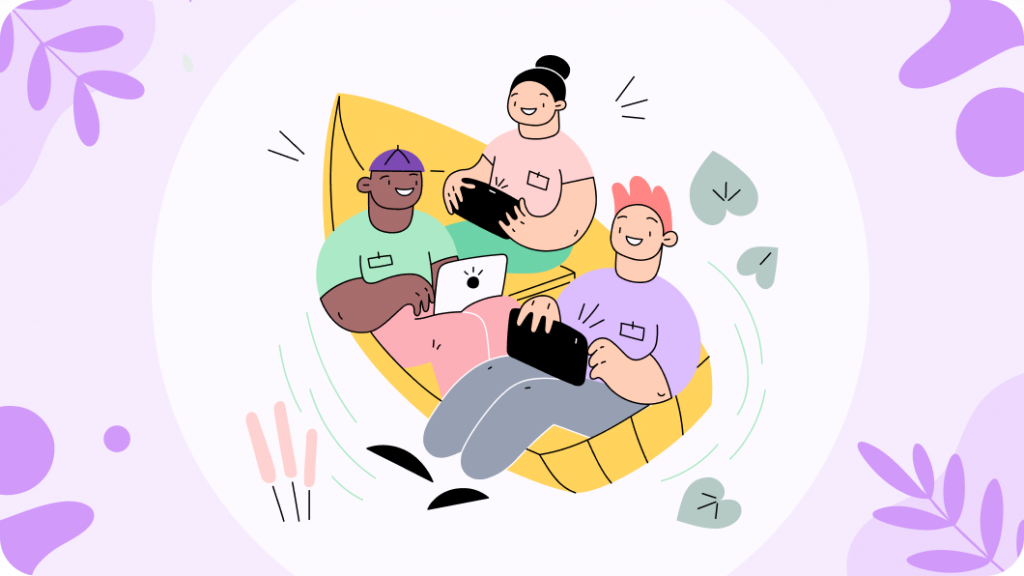Our Craving for Certainty in a Chaotic World
Certainty (noun): the state of being completely confident or having no doubt about something.
In today’s world, doubt and uncertainty are rampant. Humans crave consistency and predictability, as it makes us feel safe. Our brains are hardwired for prediction, constantly working to anticipate our body’s needs to keep us alive and well. This ability to predict and control has been vital in our evolution.
Lisa Feldman Barrett, a Professor of Psychology and Neuroscience at Northeastern University, highlights the brain’s role in predicting our body’s energy needs to keep us alive and well. According to her, our brains are constantly making predictions at a microscopic level as millions of neurons communicate.
This predictive function is crucial for maintaining stability and responding to our environment. When we face uncertainty, this predictive mechanism is disrupted, leading to increased anxiety and stress.
A University College London (UCL) study on uncertainty and stress offers valuable insights into our psychological responses to unpredictability. The research team, led by Archy de Berker, designed an experiment where participants played a computer game involving a series of decisions with uncertain outcomes.
The results showed that participants experienced higher stress levels when they were unsure about the outcome than when they were certain about the outcome even if the outcome was painful. This indicates that the stress of uncertainty can be more taxing than facing a known negative result.
The UCL study provides further evidence that our brains are wired to seek certainty and predictability. When we can’t predict what will happen, our brain’s threat response is activated, leading to increased stress and anxiety.
This finding underscores the importance of managing uncertainty in our lives, as prolonged exposure to uncertainty can have significant mental health impacts.
Our changing environment and world have led to the development of models that help us to understand our world. You may be familiar with the ‘VUCA’ model, invented in the late 1980’s at the US Army War College.
VUCA is an acronym comprising four descriptive terms – Volatility, Uncertainty, Complexity and Ambiguity. Futurist Jamais Cascio suggests the world has rocketed past being merely ‘uncertain’ or ‘volatile’ and saw the need for something new. In late 2018 Cascio developed a framework he named ‘BANI’: Brittle, Anxious, Nonlinear and Incomprehensible.
The BANI Framework
Brittle: Brittle systems seem strong but can suddenly collapse under stress. Hidden weaknesses or unexpected pressures cause sudden failures, as seen in the supply chain crisis during the pandemic. Brittle chaos is sudden, surprising, and hard to ignore.
Anxious: Anxious systems create dilemmas without clear solutions, undermining trust and increasing uncertainty. Misinformation is a prime example, making decision-making difficult. Anxious chaos is confusing, deceptive, and emotionally painful.
Nonlinear: Nonlinear systems have disproportionate input and output, leading to unpredictable outcomes. Climate change, where small changes in carbon levels result in delayed and significant temperature changes, exemplifies this. Nonlinear chaos is disproportionate, surprising, and counter-intuitive.
Incomprehensible: Incomprehensible systems are opaque and hard to understand. Advanced AI decision-making often baffles us, leading to strange errors. This chaos is ridiculous, senseless, and sometimes unthinkable.
Understanding BANI helps us navigate and adapt to modern chaos. Given our brain’s need for certainty, it’s no wonder anxiety and stress are rising.
Withstanding the chaos of a BANI world
To withstand the chaos of a BANI world, Cascio suggests we need to develop resilience, empathy, improvisation, and intuition.
Resilience is the ability to bounce back from adversity. It involves building up resources, whether tangible, like extra food supplies, or intangible, like knowledge and skills. Resilience allows us to remain flexible and adapt to sudden changes.
Develop your resilience by:
- Building a support network of friends, family, and colleagues.
- Practicing stress management techniques like mindfulness and meditation.
- Staying informed and prepared for potential crises.
Empathy involves recognizing and acknowledging the human impact of chaotic systems. It’s about being kind and understanding, both to ourselves and others. Empathy helps us navigate anxiety-inducing situations by fostering trust and compassion.
Cultivate empathy by:
- Practicing active listening and put yourself in others’ shoes.
- Engaging in compassionate self-talk and self-care.
- Being mindful of how your actions impact others.
Improvisation is the ability to adapt quickly to unexpected changes. It means being creative and flexible, rather than sticking rigidly to predetermined choices. Improvisation allows us to find new solutions when traditional approaches fail.
Enhance improvisation by:
- Embracing uncertainty and being open to new experiences.
- Practicing thinking on your feet through activities like improvisational theater or scenario planning.
- Developing problem-solving skills by tackling diverse challenges.
Intuition is our brain’s ability to recognize patterns and make decisions based on subconscious cues. It involves trusting our gut feelings and being open to insights that aren’t immediately obvious. Intuition helps us navigate incomprehensible situations by tapping into our deep-seated knowledge.
Strengthen intuition by:
- Reflecting on past experiences and lessons learned.
- Paying attention to your gut feelings and instincts.
- Practicing making decisions based on incomplete information.
Dealing with Uncertainty
The Circle of Certainty (Ray 2014) is a tool to help focus on what we can influence, reducing stress and anxiety. Inspired by Stephen Covey’s Circle of Concern/Influence, it includes:
- Inner Circle: What we have certainty and control over.
- Middle Circle: What we have some certainty and influence over.
- Outer Circle: The unpredictable.

To use this model, identify elements of a challenge within each circle:
- Inner Circle: List everything certain about the challenge. These are things you have direct control over and can take immediate action on.
- Middle Circle: List what you have some certainty and influence over. These are areas where you can make an impact but don’t have full control. Actions here can help steer outcomes in your favor.
- Outer Circle: List what is uncertain and unpredictable. Acknowledge these elements but understand that spending too much energy here can lead to stress and anxiety.
Evaluate the time and energy spent in each circle and focus on areas where you have some control. By focusing your efforts on the inner and middle circles, you can manage anxiety and maintain a sense of agency.
Example: Climate Change
- Certainty: The climate is changing; severe weather events are increasing.
- Uncertainty: The number and intensity of future weather events; the long-term climate outlook.
- Some Certainty and Control: Personal actions like using public transport, voting for climate policies, preparing your home for severe weather, using clean energy, and adopting sustainable practices.
Using the Circle of Certainty, you can channel your efforts into actions that make a difference, rather than being overwhelmed by factors beyond your control. This approach helps manage stress and fosters a proactive mindset in the face of uncertainty.
In a world characterized by BANI—Brittle, Anxious, Nonlinear, and Incomprehensible systems—our craving for certainty is more pronounced than ever.
Understanding how to navigate this chaos through resilience, empathy, improvisation, and intuition is essential. The Circle of Certainty can help us focus our energy on what we can control, reducing stress and fostering a proactive approach to uncertainty.
By developing these skills, we can better cope with the unpredictable nature of our world and maintain our well-being in the face of chaos.















